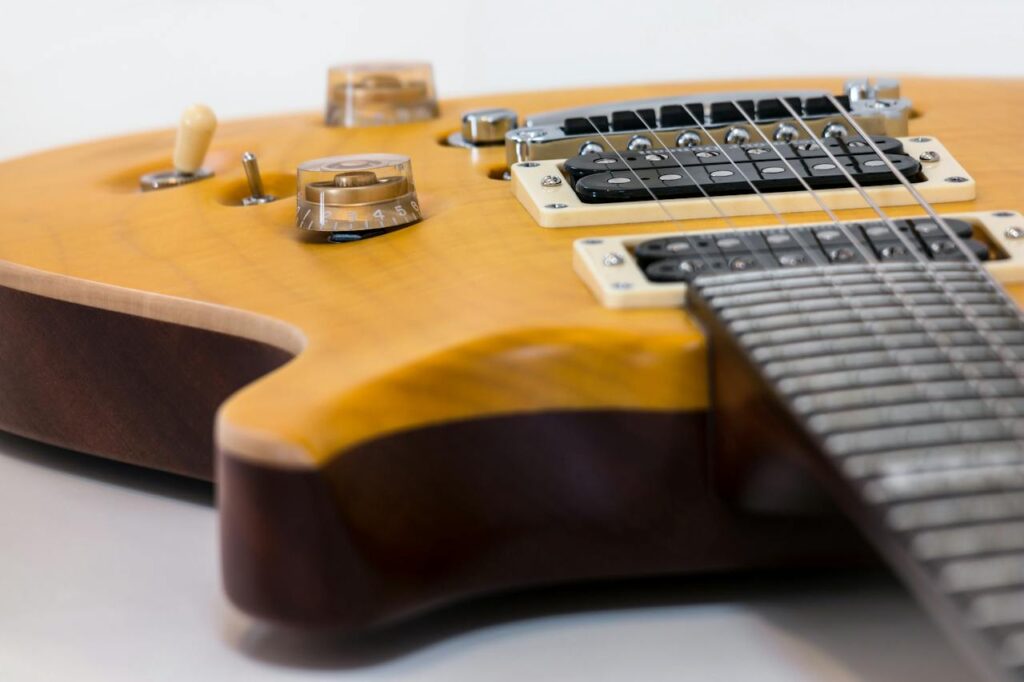If you’re a beginner guitarist, you may have come across guitar tabs and wondered how to decipher them. Guitar tabs are a popular way of notating music for the guitar, providing a simplified visual representation of the strings and frets. In this article, we will guide you through the process of reading guitar tabs, helping you unlock a whole new world of playing your favorite songs.
Understanding the Basics
Guitar tabs consist of six horizontal lines that represent the six strings of the guitar. The top line represents the thinnest string (high E) and the bottom line represents the thickest string (low E). Numbers on these lines indicate which fret to play on each string.
For example, if there is a “0” on the high E string, it means you play that string open without pressing any frets. If there is a “3” on the B string, it means you press down on the third fret of the B string and play that note.
Reading Rhythm
In addition to indicating which frets to play, guitar tabs also provide information about rhythm. This is done through various symbols placed above or below the tab lines:
- Numbers: Each number represents a specific note to be played on a particular string and fret.
- Dashes: Dashes indicate that you continue to hold a note for its duration.
- Slashes: Slashes represent strumming or picking patterns. Downward slashes (/) indicate downward strums, while upward slashes () indicate upward strums.
- Hammers and Pull-offs: Symbols such as “h” and “p” indicate hammer-ons and pull-offs respectively. A hammer-on is when you play a note without picking it by quickly pressing down on a higher fret with another finger. A pull-off is when you release a finger to sound a lower note without picking it again.
Applying Techniques
Guitar tabs can also include specific techniques to enhance your playing. Here are a few common symbols you might encounter:
- Bend: An upward arrow indicates that you should bend the string at a specific fret. The number of arrows indicates the extent of the bend.
- Vibrato: A wavy line (~) indicates that you should add vibrato to a sustained note by slightly bending the string back and forth.
- Slide: A forward slash with a number (e.g., /5) indicates a slide. You start playing the note at the indicated fret and then slide your finger up or down to the new fret without picking again.
Tips for Practice
Learning to read guitar tabs takes time and practice. Here are a few tips to help you on your journey:
1. Start with simple songs: Choose songs with straightforward tab arrangements to build your confidence and understanding.
2. Listen to the song: Use the guitar tab as a guide, but also listen to the original song for timing, rhythm, and nuances.
3. Watch video tutorials: Supplement your learning by watching video tutorials that demonstrate how to play specific songs using guitar tabs.
4. Practice slowly: Start at a slow tempo, ensuring accuracy and clarity in your playing. Gradually increase the speed as you become more comfortable.
5. Experiment and have fun: Don’t be afraid to experiment with different techniques and interpretations of the music. Make it your own!
Further Resources
As you progress in your guitar journey, consider exploring more advanced music theory and notation systems such as standard notation and chord charts. These will expand your understanding of music and enable you to communicate with other musicians effectively.
Remember, reading guitar tabs is just one step towards becoming a skilled guitarist. Dedicate regular practice time, be patient with yourself, and enjoy the process of learning and playing music. With time and effort, you’ll be strumming your favorite songs with confidence and joy.
Read Also:
An Ultimate Guide to Green Living at Home



